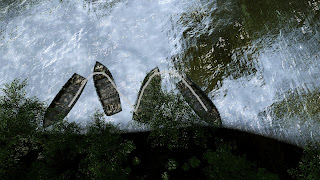ADOBE
Adobe
is considered an extremely durable material under favourable circumstances –
particularly in hot weather. If the presence of clay is too much, it will
affect the durability of the material as clay is accountable for its “expansion,
on the absorption of moisture, and its shrinkage on drying”, surplus of gravel
would also affect its durability.
Adobe
is a combination of sand, silt, clay and water. It can be used as mortar or
plaster when mixed to a “plastic consistency”.
“Performance of an adobe soil is alrdggely dependent on its particle size
distribution.”
Advantages
– greater thermal mass
Disadvantages – vulnerable to earthquake
damage
CONCRETE
“Concrete
has relatively high compressive strength, but significantly lower tensile
strength, as as such is usually reinforced with materials that are strong in tension
(often steel)” – i.e. if pushed it will not break, but if pulled it will break,
thus must be reinforced.
“has
very low coefficient of thermal expansion” – i.e. essentially everything will
expand in heat, and shrink in cold, however concrete will not expand in heat as
much
If
no room is provided to allow expansion of concrete, it is likely to cause
cracks as it expands.
Over
time concrete shrinks. After 30 years, concrete is considered to stop shrinking
because of hydration.
WOOD
Sapwood
–highly susceptible to fungal and insect attack.
Wood
is naturally durable. Deterioration of wood would usually derive from insects
and fungi, otherwise it can last for “thousands of year swithout substantial
change” – in sheltered conditions away from biological factors.
Light
and heat, for e.g., are also causes for decay.
“Fungi includes molds and mildews, and
are everywhere in the environment. Fungi are simple plant-like organisms which
do not have chlorophyll to produce their own food. In essence, they have a
parasitic relationship with their host. They rapidly multiply in a supportive
environment, and send seed-like spores out (sometimes air-borne) to extend
their range. Some fungi do not affect the strength of wood by their
activity--they may only stain the wood. However, some can completely destroy
the wood cellulose (polymer backbone) and lignin (cellular Aglue@). Ultimately,
the wood residue crumbles to a powder.”
“Termites can pose
a threat to furniture, but are usually more interested in the wooden building
surrounding the collection. Other insects present a special problems, since
they may not even use wood for food. Some ants and bees tunnel through wood
creating galleries for shelter. These are not usually a problem with furniture
but can be a major destructive agent in historic buildings.”
“Fungal damage is
usually noticed in the advanced stages of development. The fruiting bodies can
form a dense, fuzzy-appearing mat on the surface. Infestation may also be
accompanied by a distinctive, disagreeable odor. Fungal growth can be removed
by wiping or vacuuming the surface. Some people are sensitive to airborne
spores, so care should be taken in cleaning. Vacuuming should be conducted with
a wet-dry vacuum if possible, and the filter should be replaced or thoroughly
cleaned afterward. Cleaning should be done outdoors, if possible.”
References



























